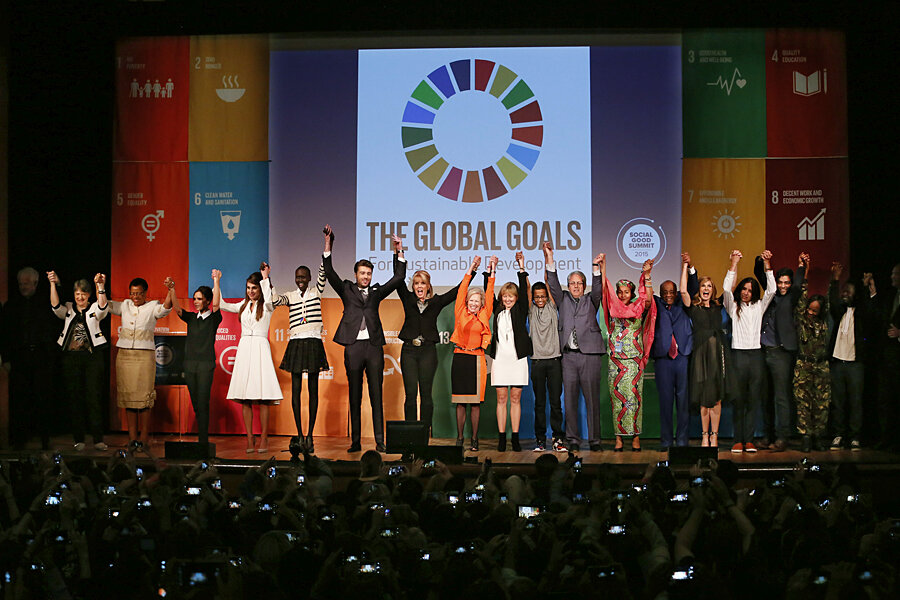The challenge of tracking progress of UN's development goals: data
Loading...
The 2030 Agenda for Sustainable Development, which seeks the eradication of poverty and hunger and to which all countries have pledged to implement, requires a sweeping paradigm shift on several fronts.
Its advent also marks a turning point for the global statistical system.
To measure progress in relation to all 17 Sustainable Development Goals and their 169 targets, the United Nations Statistical Commission has endorsed a Global Framework consisting of 230 individual indicators. This number represents about four times more indicators than for the past Millennium Development Goals (MDGs), which means that an unprecedented amount of data will have to be produced and analyzed.
A tremendous effort from countries and international organizations alike will be required: over one third of the SDG indicators agreed have neither intergovernmentally defined methodologies nor currently available data.
The Food and Agriculture Organization of the United Nations (FAO) has been appointed as the custodian for 21 of the 230 SDG indicators, as well as co-custodian of another four. That’s a more than sixfold increase from the four indicators that the Organization was responsible for under the MDGs.
The 25 indicators span across seven different SDGs, namely Goals 1 (poverty eradication), 2 (zero hunger and malnutrition), 5 (gender equality), 6 (clean water and sanitation), 12 (responsible consumption and production), 14 (oceans, seas and marine resources) and 15 (forests and life on land).
The intense work ahead stems from the strong links between the 2030 Agenda and all dimensions of FAO’s policy, technical, programmatic and investment work. It also reflects the trust that countries place on FAO’s technical capacities.
As a custodian agency, FAO will perform 3 main functions: i) contribute to building countries’ capacity to collect relevant data in partnership with other stakeholders; ii) gather and harmonize the information provided by countries and produce global and regional aggregates; and iii) prepare annual global reports to inform the international community on the progress made towards the achievement of the agricultural-related SDG targets.
Countries have the primary responsibility for follow-up and review of progress made in the process of implementing the SDGs, which requires quality, accessible and timely data collection. In this regard, capacity building will be particularly important for all countries, especially small island developing states (SIDs) and least developed countries (LDCs).
The SDG data requirements far exceed the current capacities of most of the national statistical systems. Indeed, many countries – even where agriculture accounts for a substantial portion of GDP and employment - have not managed to conduct an agricultural survey,.
Paving the road to progress
FAO has been working on various statistical capacity-building initiatives. Many of them have been implemented under the Global Strategy to improve Agricultural and Rural Statistics, started by the UN Statistical Commission in 2012.
These include innovative approaches and cost-effective methodologies, such as the use of mobile technology for data collection and of remote sensing imagery for building the frameworks for agricultural surveys, particularly regarding forests, crops and fisheries stocks.
Other tools such as the Food Insecurity Experience Scale, which allows for people to gauge their own situations, also contribute to the 2030 Agenda by establishing a baseline against which countries can measure progress.
FAO is also developing an innovative survey toolkit called AGRIS (Agricultural Integrated Survey). It will allow countries to collect all the key information on the economic, environmental, social and technical dimensions of farms, including family farms, over a cycle of 10 years. Through AGRIS, countries will be able to provide basic data for the monitoring of five key agricultural SDG indicators. To support the implementation of AGRIS, FAO is establishing a partnership with the World Bank that is called GRAiNS, which also involves other relevant partners.
The FAOSTAT Web Site, the world's largest and most comprehensive statistical database on food, agriculture, fisheries, forestry, natural resources management and nutrition, has now been overhauled and improved, creating a more user-friendly tool for free and open access to over 3 million time-series and cross-sectional data of 245 countries and territories.
FAO is working to strengthen its internal capacities to deliver the expected results in monitoring the SDGs, aiming to make all its statistical programmes and processes, at Headquarters and in the field, better coordinated, better aligned and more consistent.
The 2030 Agenda requires a sweeping paradigm shift on several fronts. It is daunting but eminently achievable. FAO is committed to making every effort to support its implementation and monitor the progress that must be made.
José Graziano da Silva is the Director-General of the U.N. Food and Agriculture Organization (FAO).
This story originally appeared on Food Tank.







